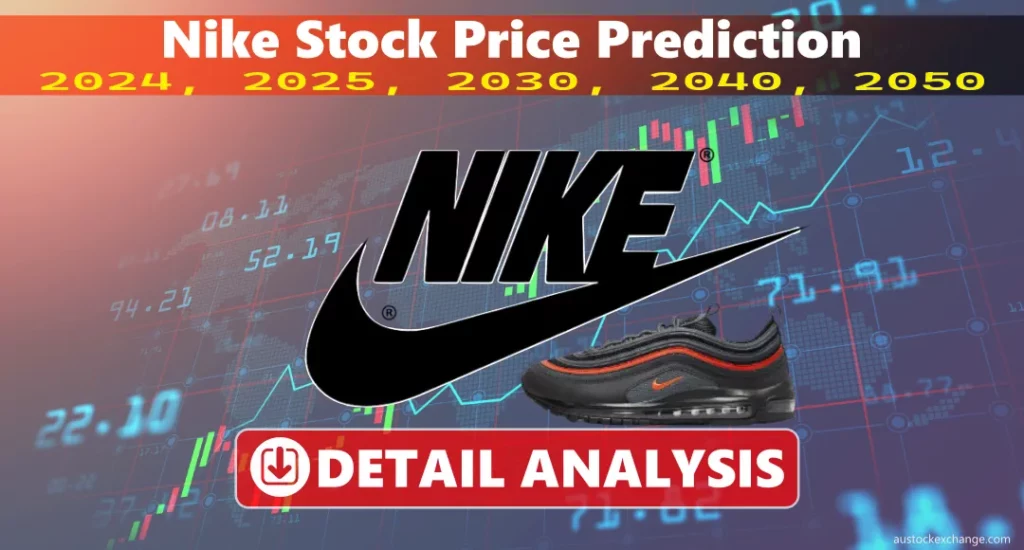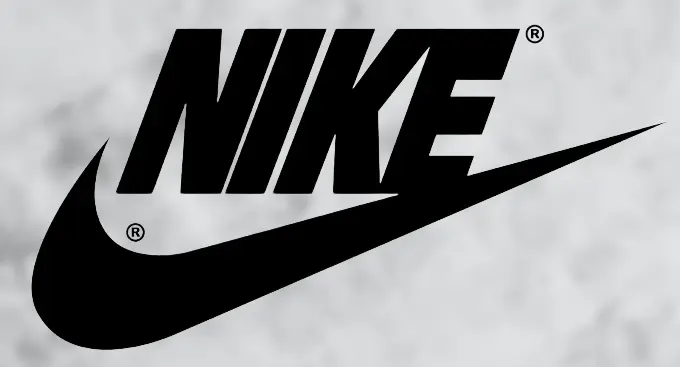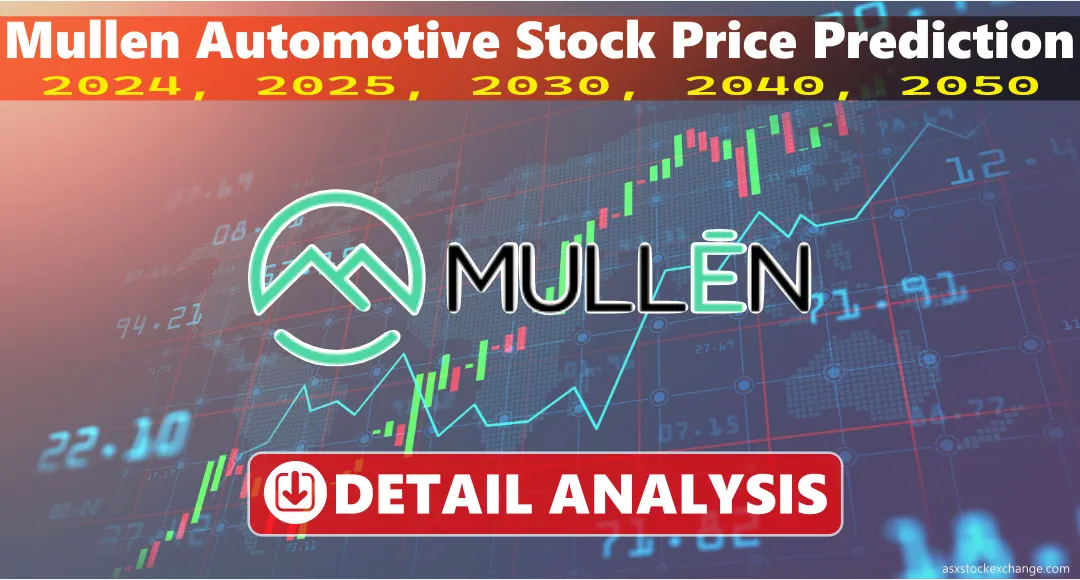Nike Stock | Stock Price Prediction 2024 – 2050 (Detailed Analysis)
Nike Inc. (NYSE: NKE) dominates sports and athleisure worldwide. Nike is linked with sports prowess and lifestyle fashion, from its famous swoosh emblem to its cutting-edge products. Nike’s stock has become popular for investors seeking brand name and growth opportunities.
This article analyzes Nike stock’s growth potential and anticipates its price for 2024, 2025, 2030, 2040, and 2050.
What is Nike Inc NYSE: NKE?
Nike Inc., based in Beaverton, Oregon, is a worldwide enterprise. Since 1964, Nike has been a prominent designer, marketer, and distributor of sports footwear, clothes, equipment, and accessories. By focusing on innovation and design for a wide range of athletes and customers, Nike has become a global sport and athleisure giant.
Nike Stock Price Prediction 2024, 2025, 2030, 2040, 2050
Predicting stock prices requires studying the company’s financial performance, industry developments, economic circumstances, and market sentiment. The following Nike stock price forecasts are based on rigorous study and market research:
| Year | Predicted Stock Price Range | Minimum Price | Maximum Price |
| 2024 | $140 $160 | $140 | $160 |
| 2025 | $150 $180 | $150 | $180 |
| 2030 | $200 $250 | $200 | $250 |
| 2040 | $350 $450 | $350 | $450 |
| 2050 | $500 $650 | $500 | $650 |
Is Nike Stock Good to Buy? (Bull Case & Bear Case)
Bull Case:
- Nike is a globally known and valued brand with dedicated customers.
- Nike spends heavily on R&D, creating breakthrough goods and technology that boost brand loyalty.
- Nike sells sports equipment, wearable technologies, and digital platforms in addition to athletic footwear and clothing, creating many income sources.
- Nike can capitalize on the rising demand for sports and lifestyle items in developing economies, which are present in over 200 countries.
Bear Case:
- Adidas, Under Armour, and Lululemon compete in the athletic and athleisure industries, which might hurt Nike’s profits and growth.
- Disruptions to Nike’s complicated worldwide supply chain might delay manufacturing, raise expenses, and cause inventory concerns.
- Nike’s labour and environmental difficulties might hurt its image and heighten regulatory scrutiny.
- Economic downturns or consumer spending patterns might affect Nike’s premium-priced product sales and profitability.
Key Details About Nike
- Headquarters: Beaverton, Oregon, United States
- Founded: 1964
- CEO: John Donahoe
- Employees: Approximately 79,100 (as of 2022)
- Revenue: $46.7 billion (FY 2022)
- Net Income: $3.7 billion (FY 2022)
- Market Capitalization: Approximately $208 billion (as of April 2024)
Nike Financial (Balance Sheet)
- Total Assets: $40.9 billion (FY 2022)
- Total Liabilities: $28.8 billion (FY 2022)
- Total Equity: $12.1 billion (FY 2022)
- Cash and Cash Equivalents: $9.4 billion (FY 2022)
- Long Term Debt: $9.3 billion (FY 2022)
Key Performance Indicators
- Revenue Growth (YoY): 5.3% (FY 2022)
- Net Income Growth (YoY): 5.4% (FY 2022)
- Operating Margin: 14.0% (FY 2022)
- Return on Equity (ROE): 30.5% (FY 2022)
- Brand Value: $33.6 billion (2022, according to Interbrand)
Comparison with Listed Peers
To comprehend Nike’s position in the business, compare its success to that of other big sports and athleisure players. Compare Nike’s main KPIs to its peers:
| Company | Market Cap | Revenue | Net Income | Operating Margin | ROE |
| Nike | $208 billion | $46.7B | $3.7B | 14.0% | 30.5% |
| Adidas | $49 billion | $21.2B | $657M | 5.3% | 10.6% |
| Under Armour | $7.4 billion | $5.7B | $300M | 7.6% | 17.6% |
| Lululemon | $44 billion | $6.3B | $704M | 22.0% | 37.8% |
Positive & Negative Factors to Invest in Nike

Positive Factors:
- Nike is a globally known and valued brand with dedicated customers.
- Nike spends heavily on R&D, creating breakthrough goods and technology that boost brand loyalty.
- Nike sells sports equipment, wearable technologies, and digital platforms in addition to athletic footwear and clothing, creating many income sources.
- Nike can capitalize on the rising demand for sports and lifestyle items in developing economies, which are present in over 200 countries.
Negative Factors:
- Adidas, Under Armour, and Lululemon compete in the athletic and athleisure industry, which might hurt Nike’s profits and growth.
- Disruptions to Nike’s complicated worldwide supply chain might delay manufacturing, raise expenses, and cause inventory concerns.
- Nike’s labor and environmental difficulties might hurt its image and heighten regulatory scrutiny.
- Economic downturns or consumer spending patterns might affect Nike’s premium priced product sales and profitability.
Conclusion
Nike Inc. stock is a good investment in the booming sports and athleisure business. With its brand domination, product innovation, diversification plans, and global growth chances, Nike can capitalize on the expanding demand for sports and lifestyle items. Investors should weigh the bull and bear arguments, the company’s financial performance, and possible issues, including severe competition, supply chain complexity, and sustainability. Nike investment means weighing the risks and advantages of this famous and vital company.
FAQs
What is Nike’s primary business?
Nike, Inc. produces, markets, and distributes athletic footwear, clothes, equipment, and accessories for sports and athleisure.
What factors contribute to Nike’s stock price predictions?
Brand dominance, product innovation, diversification strategies, global expansion opportunities, and challenges like competition, supply chain complexities, sustainability concerns, and macroeconomic factors affect Nike’s stock price predictions.
How does Nike compare to its competitors in terms of financial metrics?
Nike has higher sales, operating margins, and ROE than its sports and athleisure counterparts. Its market value is likewise far more significant than most rivals.
What are some positive factors to consider when investing in Nike?
Nike’s brand domination, product innovation, diversity, and worldwide development in new areas are positives.
What are some negative factors to consider when investing in Nike?
Negative aspects include intense rivalry, supply chain issues, labor and sustainability problems, and macroeconomic conditions that might affect premium product consumption.










